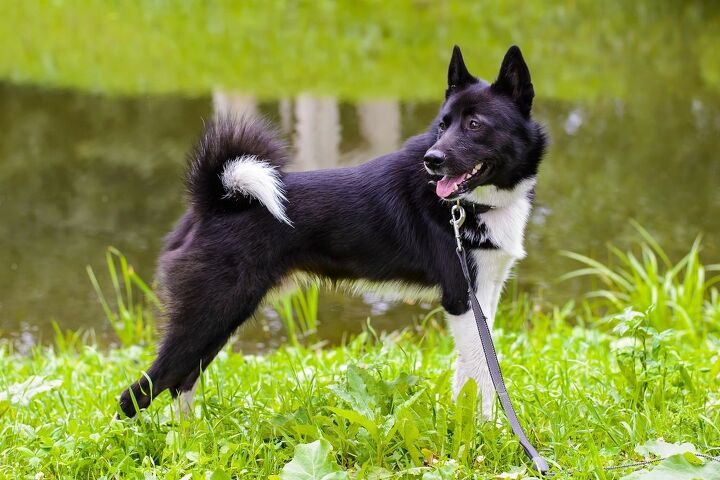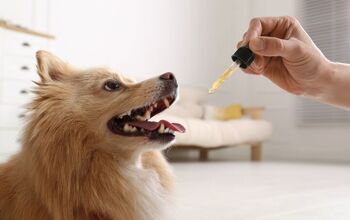Russian-European Laika


About Russian-European Laika
The Russian-European Laika is a hunting dog known for its ability to tree game, though it has also been used to hunt game birds, moose, and even bear. This breed is unique among hunting dogs because they also make great family pets, bonding so strongly with family that they are difficult to rehome. The Russian-European Laika does, however, require a great deal of socialization and they have a tendency to become aggressive or territorial around other dogs.
The Russian-European Laika is a hunting dog known for its ability to tree game.
The Russian-European Laika is a hunting breed developed in the mountains of Finland and Russia in the 1900s. The Laika is an ancient landrace of dogs and the Russian-European Laika is the result of a breeding program that began in 1944. Early Laikas were not well suited to the agricultural lifestyle and uncontrolled breeding led to problems with the native population. By the early 1930s, few specimens remained which prompted the development of the breeding program by the All-Union Research Institute for the Hunting Industry in Kalinin. The breed was officially recognized by the FCI in 1980 and by the United Kennel Club in 1996 but is yet unrecognized by the AKC.
The Russian-European Laika was developed from the landrace Laika dogs of the ancient Spitz type as part of a breeding program begun in 1944.
The Russian-European Laika is a highly active breed so a working or active breed formula is recommended. Choose a recipe made with plenty of high-quality protein for lean muscle maintenance with plenty of healthy fats for energy and coat support.
The Russian-European Laika is a intelligent breed that responds well to training, though they can be distracted at times.
The Russian-European Laika is a intelligent breed that responds well to training, though they can be distracted at times. These dogs were developed for hunting, so they require a significant amount of socialization and training. They also tend to be territorial around other dogs, so socialization is particularly important for dogs intended to be kept as family pets. This breed also has a high prey drive and a tendency to bark, so they do well as watch dogs. This breed will generally be suspicious of strangers, but they are not inherently aggressive.
The Russian-European Laika is a medium-large breed standing 19 to 24 inches tall and weighing 40 to 50 pounds, on average.
The Russian-European Laika was developed as a hunting breed, so they are intelligent and require a significant amount of training. These dogs do form strong bonds with their family and they do get along with children, though they can sometimes become a little excitable around children and small pets. The Russian-European Laika is often suspicious of strangers and can be territorial around other dogs, so they are not recommended for inexperienced dog owners or multi-dog households. They do have a tendency to bark, so they make good watchdogs.
The Russian-European Laika is a healthy breed in general, largely because of its ancient origins. Like all breeds, however, there are some conditions you should look out for – primarily musculoskeletal issues related to size and activity like hip and elbow dysplasia.
The average lifespan for the Russian-European Laika is 10 to 12 years.
The Russian-European Laika is a highly active breed that requires a significant amount of daily exercise. Like many hunting breeds, these dogs need plenty of outdoor space to run as well as at least 60 minutes of vigorous exercise daily.
The Russian-European Laika is often suspicious of strangers and can be territorial around other dogs.
The Russian-European Laika is not currently recognized by the AKC but is a member of the Northern Breed Group with the UKC And the Primitive Dogs group with the FCI.
The Russian-European Laika is descendant from the ancient Spitz type, so he has a dense double coat. These dogs mostly come in black and white, though there are some that are all black or all white. This breed has a medium-length coat with a dense, soft under coat and a straight top coat. They do require a great deal of brushing and grooming to control shedding, though they don’t tend to need frequent baths unless they get dirty.
The Russian-European Laika has an average litter size of 6 to 10 puppies which is large but not uncommon among Laika breeds. Because this is a hunting breed, puppies require early socialization and training – this is particularly important if you plan to keep your Russian-European Laika around other dogs or pets because the breed tends to be fairly territorial.
Photo credit: Natalya Rozhkova/Shutterstock; Ihor Hvozdetskyi/Shutterstock

Kate Barrington is the loving owner of two cats (Bagel and Munchkin) and a noisy herd of guinea pigs. Having grown up with golden retrievers, Kate has a great deal of experience with dogs but labels herself a lover of all pets. Having received a Bachelor's degree in English, Kate has combined her love for pets and her passion for writing to create her own freelance writing business, specializing in the pet niche.
More by Kate Barrington

























